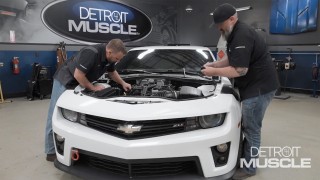How To Cleanly Weld Stainless Steel
When it comes to joining stainless steel, there are several processes that you can use. For the cleanest look and smallest weld beads, though, nothing beats a TIG. To weld together the custom exhaust on Project Red Tide, LT has a Forney Industries 220 AC/DC TIG. It’s an inverter-based machine that plugs into 230 volts of single-phase power. It can output anywhere between 10-200 amps of power which makes it the perfect general-purpose machine for fabrication projects.
The machine comes with 10 pre-programmed settings for both steel and aluminum and a chart is provided. You can store your own custom settings if you prefer. Both pre and post gas flow duration can be controlled which is important when welding stainless steel. The Forney 220 AC/DC comes with 12.5-foot leads, a gas flow meter, ground clamp, and a foot pedal to control the output current. It also has high-frequency capability which means you can have clean arc-starts without having to contact the tungsten to the base material.
Stainless steel is a somewhat tricky material to weld properly, as it’s sensitive to heat. A good rule of thumb is to travel as fast as you are comfortable doing. Quickly roll into the throttle with the pedal and get the metal just hot enough, make your weld, and then get off the heat as quickly as possible. Don’t forget to let the post-flow cycle complete before moving the torch away from the weld area. On a stainless pipe, the post-flow can be set at 8 seconds.
When mocking up the exhaust, LT used a MIG welder with mild steel filler to tack everything in place. It’s a quick and easy way to get it locked down however, you don’t want to simply weld over those when using the TIG as the mild steel can cause the stainless to rust. So using a Forney dual-sided flap wheel with 80 grit, we can grind down the tack welds flush with the base metal. Then, it can be TIG welded over the gaps.









